Ever wondered where the control station of massive ships is located where it is operated from? Ships are enormous vessels that can stretch hundreds of meters in length and carry thousands of tons. It is critical to be able to operate and maneuver such a massive vessel safely.
The bridge is a vessel’s principal control center, from which the captain and officers can manage the whole vessel’s operations. It is usually placed in a position with an unobstructed view and immediate access to the ship’s vital controls.
In this post, Let us look into how the bridge has evolved, what are the primary functions it plays, the basic design of the bridge, its many parts, and the rules that must be adhered to.
The History Of The Bridge On Ships
Historically, the bridge was linked to the paddle or wheelhouse, which contained the steering machinery. This name was given because it resembled a real bridge.
Even when technical advances rendered paddle wheels obsolete, the term “bridge” persisted. The captain is always the master of the bridge, and he retains control and accountability of the vessel when on board.
The Bridge: A Central Control Hub
The bridge is a ship’s primary control center, serving as a hub for crucial operational activities, communication, and decision-making. The work environment and activities are highly complex and safety-critical because the bridge is situated on a structure that frequently functions in severe and unpredictable conditions.
A vessel’s bridge houses the major steering equipment, navigation charts, communication systems, engine control, and other elements. Furthermore, some bridges feature neighboring bridge wings that house the stern and bow thruster machinery. These wings extend beyond the main bridge chamber and offer an unimpeded view of the surroundings.
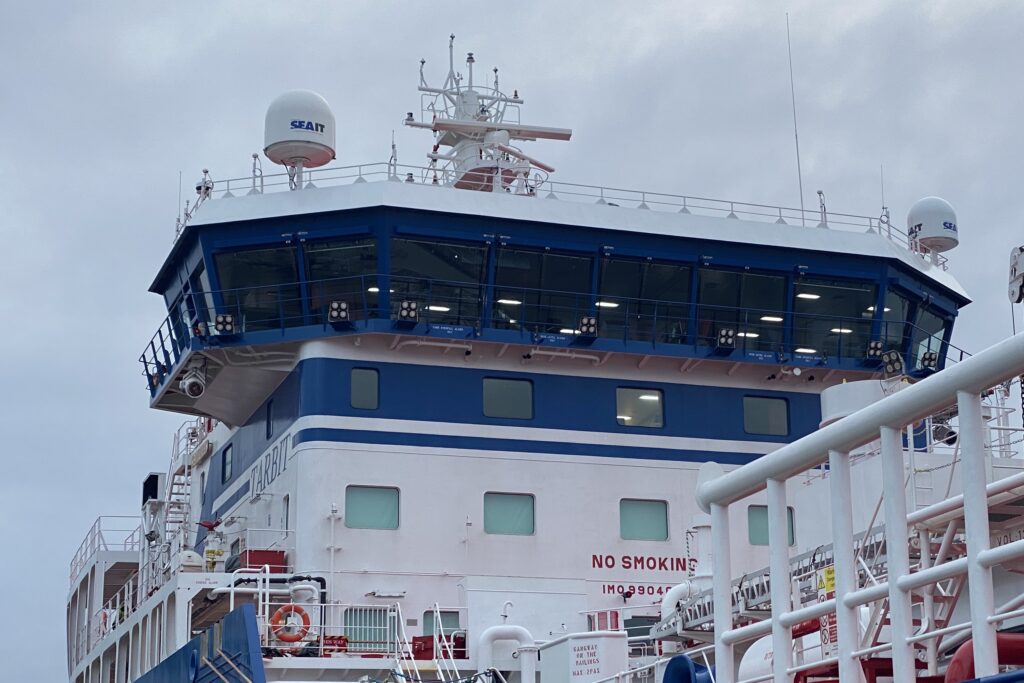
An officer of the watch is always present on the bridge, controlling the ship’s movements and communicating with the engine room. To avoid any untoward incidents, an officer and a lookout must typically be present on the bridge.
On the bridge, a safe is used to store the ship’s papers, permits, critical documents, passports, cash for emergencies, etc. To prevent pirate attacks, the bridge’s entry portals are frequently strengthened and commonly equipped with bulletproof glass.
Bridge Design And Layout
The design of the bridge will vary depending on the ship. But it should be noted that the bridge arrangement generally adheres to the same fundamental design and layout regardless of the type of vessel.
A ship’s bridge is supposed to be its central control hub, offering an unimpeded view of the surroundings and quick access to all controls. The main goal of navigation must be achieved in terms of visibility despite the bridge’s abundance of electrical and navigational technology.
The bridge is roughly divided into two sections: the fore area, which is intended for clear observation, and the remaining area, which is for controls and communications.
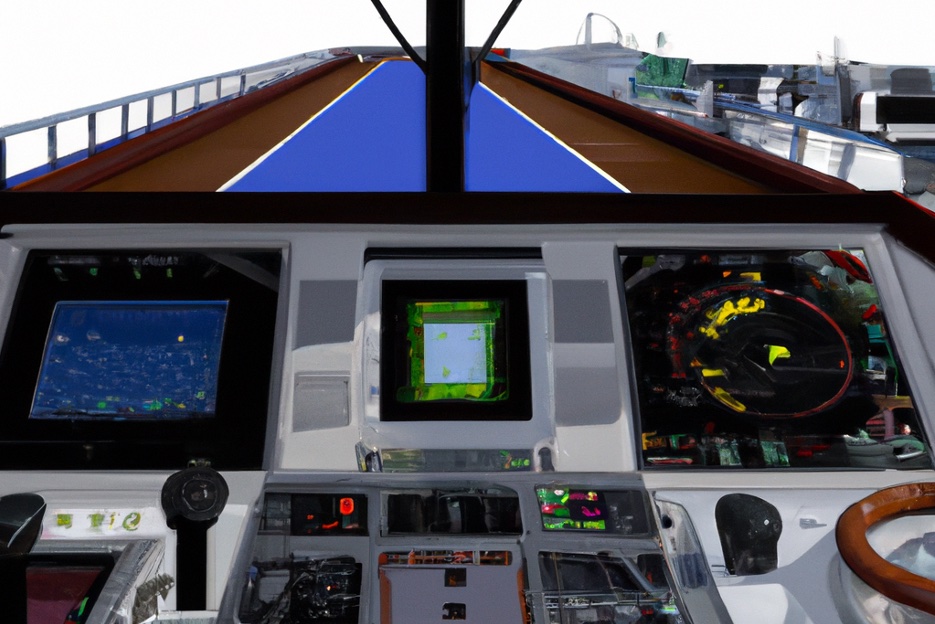
The observation area is protected from storms and other bad weather by a wide glass wall that surrounds it at the front. Often, steel or aluminum frameworks are utilized to support plexiglass structures. Additionally, lowering shades are employed to ensure that visibility is not compromised by bright lighting.
The primary navigational, steering and communication apparatus is located in the remaining space of the bridge. Other controls can be used to remotely control different ship systems, for example, cargo or ballast systems.
The control area is incorporated into various console units that are arranged on each side of the bridges in a semi-circular pattern. This includes steering wheels and radar systems operated by ship officers.
A bridge will typically have a captain, a chief mate, a second mate, a third mate, competent seamen, and regular seamen depending on the type of ship.
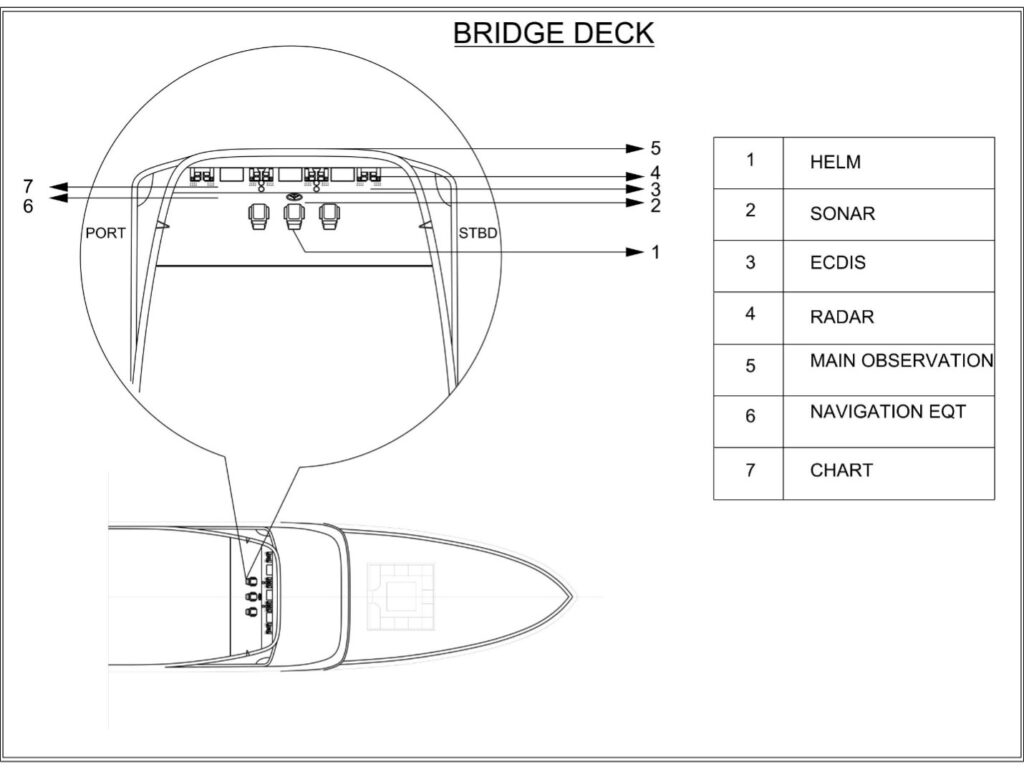
What Are Bridge Wings?
Bridge wings are present in addition to the central observation deck. They are on the port and starboard sides, and their main function is to widen the visibility area, particularly during difficult maneuvers like port docking.
Additionally, they contain the controls for the separate bow and stern thrusters that are located on either side. Deep inside the hull, thrusters are propellers that provide the captain more control over the ship so they can make precise maneuvers and changes.
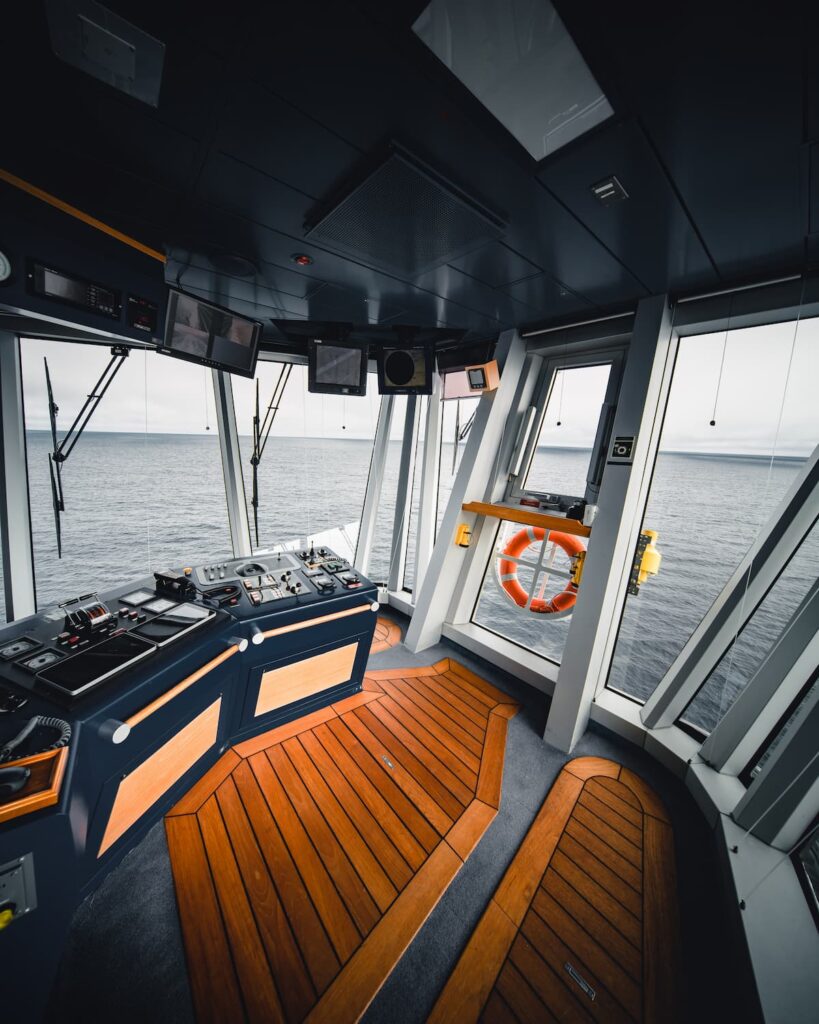
Depending on the type of ship, the bridge wings can be either open or closed. The wings are typically left open to allow for optimum visibility. To convey information back to the main bridge section, communication equipment can also be located on the wings. Only skilled seamen and watch officers are permitted access to the bridge wings.
Steering And Engine Layouts On The Bridge
Controls for the ship’s rudder, engines, and thrusters are located on one of the several consoles in the bridge. The chief engineer or the officer in the engine room has the main responsibility for engine control, but an officer from the bridge frequently gives orders to the engine room.
The propellers may also be turned in reverse thanks to an engine control unit, which also allows for a different range of speeds. The numerous engines on board frequently have their controls. There are bow and stern thrusters that enable a wider range of transverse precise motions in addition to the engines and propellers.
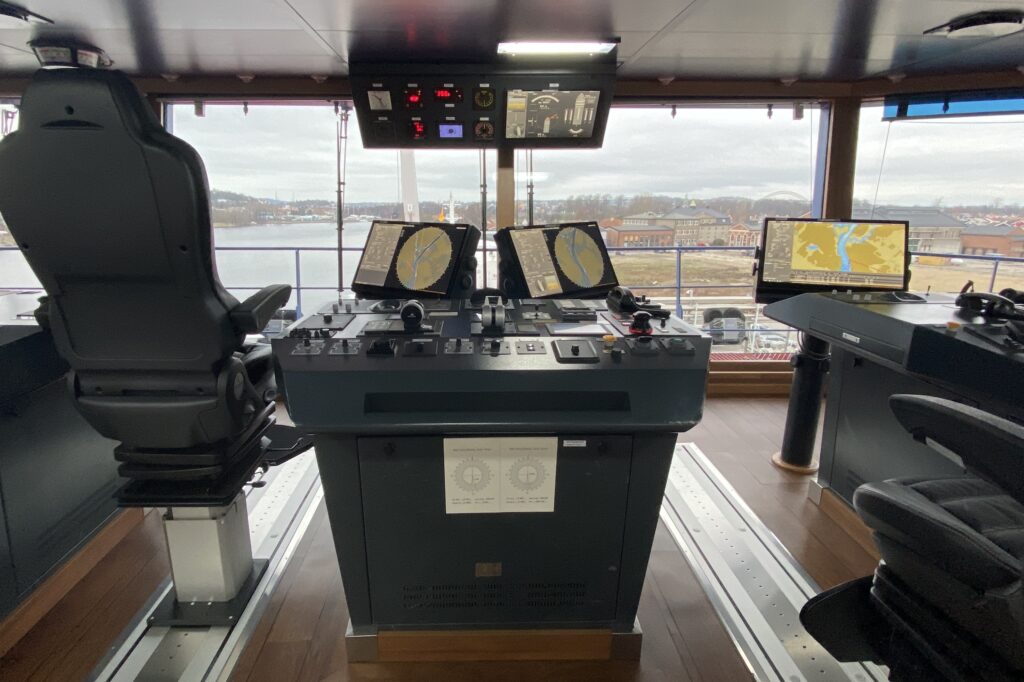
The bridge is where the controls for the rudder and thrusters are located, which are used largely to maneuver the ship. The rudder is designed to be able to turn 450 degrees to both the port and starboard sides. In the case of more advanced systems like azimuth or integrated propulsion systems, a larger command center is frequently used.
An intriguing technological advancement is the use of azimuthal propulsion systems, which let regular engines and rudders work together. They turn in practically any direction and achieve efficiency close to 100%. This eliminates the requirement for separate controls for the steering and propulsion systems. Controls on the port side are typically color-coded red, while those on the starboard side are frequently coded green. The officers and seamen can maintain control more easily as a result.
A vessel’s navigation system is a vital part because it is the only way to transport it securely from one port to another. A Global Positioning System (GPS), Navtex receiver, Electronic Chart Display and Information System (ECDIS), radar systems, and communication channels are all considered to be basic navigational tools.
Charts that are used to plot routes are frequently utilized to regulate navigation. A GPS and compass system are used to make sure the boat stays on course. To maintain the bridge’s compartmentalization, the charts and equipment are kept in different places. Additionally, binoculars are utilized for sighting during the day.
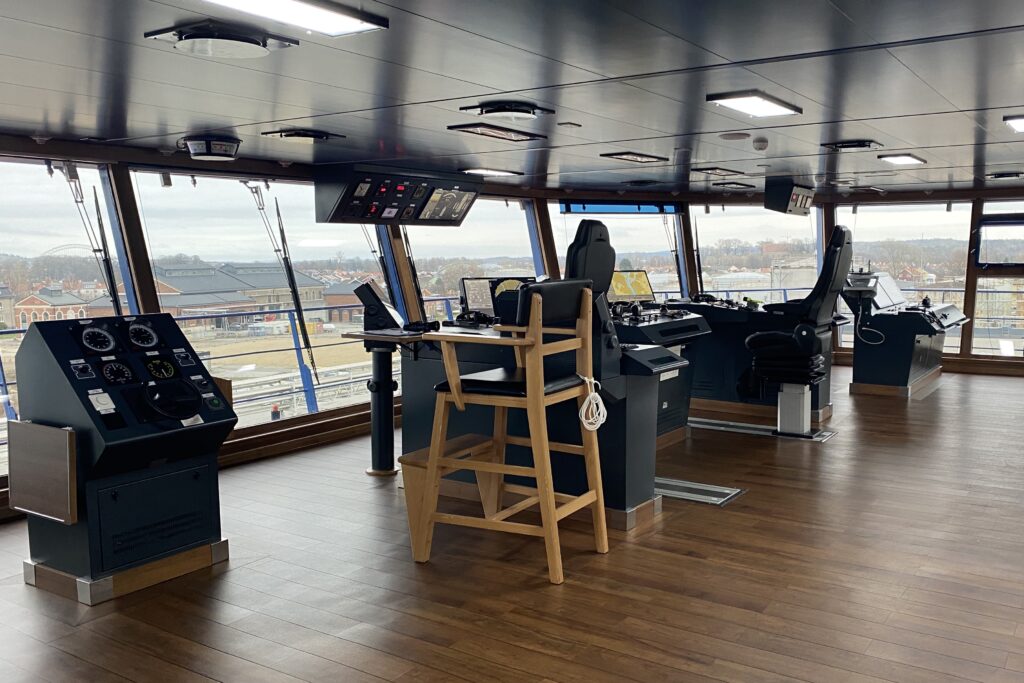
However, the radar must be used to precisely position and navigate the ship when the weather is not clear, visibility is poor, or it is dark out. When utilizing radar, a range scale that takes the speed and nearby traffic into account must be employed. Ships weighing more than 10,000 gross tons are required to navigate and plot their path using two radars.
On such warships, automatic tracking aids (ATA), electronic plotting aids (EPA), and automatic radar plotting aids (ARPA) are also essential. Errors are also signaled by the same alarms that are used to warn about approaching collisions, equipment failure, etc. Onboard the ship, warnings are signaled through indicator lights in specific areas.
Drawbacks Of A Poorly Designed Bridge
Tasks performed by the ship’s crew and navigation team involve interacting with both people and technology (the various equipment and systems of the bridge and ship). Onboard the ship and with outside parties, this calls for engagement and communication between people and technology (e.g. port control, Vessel Traffic Service, surrounding ships, onshore facilities, etc.).
Technology-wise, the bridge is a complicated system. A merchant ship’s typical bridge equipment may include things like:
- an autopilot,
- conning displays,
- radars,
- Automatic Radar Plotting Aid (ARPA),
- Electronic Chat Display and Information System (ECDIS),
- Dynamic Positioning (DP),
- Global Positioning System (GPS),
- Gyrocompass,
- various communication devices required by GMDSS
- and a combination of other systems and sensors.
A single bridge could be made up of dozens of pieces of equipment from many brands and suppliers. The design and layout ideas used by these companies for hardware and software components are often unique.
The crew may experience issues once the equipment has been built and integrated into a single working environment (such as the bridge), which calls for the employment of the equipment in tandem. Consequences for the crew have been demonstrated as a result of inconsistent design across these many pieces of equipment and interfaces, and it has even been suggested that such inconsistent design may have contributed to maritime accidents.
Bridge Rules And Guidelines
Vessels must adhere to the toughest protocols while at sea to guarantee that SOLAS and IMO requirements are met. The bridge and its equipment must adhere to regulations because the bridge controls the whole ship. The following are some of the most common rules that a vessel must follow,
- The bridge needs to be situated so that it has a clear view both forward and behind it for navigational purposes. The officer on watch (OOW) must also have a minimum eyesight of 2550 and at least 112.50 visibility on both the port and starboard sides.
- The bridge wings must be able to see the side of the ship with 1800 on one side and 450 on the other. The minimum unobstructed visibility for the officer in charge of steering is 600 on both sides.
- Ships with a gross tonnage of more than 10,000 must have a single X-band radar operating at a frequency of 9 GHz. This is by IMO navigation and steering standards.
- Alarms should be installed in every zone on the ship in case of any emergencies. These alarms signal various equipment failures on the bridge. In addition, the bridge is informed immediately of any failure or damage in other areas of the ship. After 30 seconds have passed with no response from the officer on duty, a backup alarm is sounded. This backup alarm signals the need for help by sounding in the offices, mess, and cabins.
- Each piece of equipment used onboard must be IMO certified and have completed a battery of tests designed to determine how durable it is and how long it will continue to work. Fire extinguishers, flares, and distress beacons are kept on the bridge for safety’s sake.
- In case of an emergency, the bridge can activate a network of water pumps positioned all around the ship to prevent any other vessel from approaching too closely. Additionally, specialized marshals who keep their weapons on the bridge are frequently hired to provide contracted security.
What Is A Bridge Simulator?
Giving a brand-new recruit command of an entire vessel is not practical for training purposes. Bridge simulators are useful in situations like this. It takes substantial training on the bridge to be able to sail through a body of water safely. Before ever taking control of the bridge, officers usually spend years perfecting their abilities.
The majority of training facilities and institutions have their simulators, allowing recruits to train on them before being sent to sea. Although they are much larger, they resemble aviation cockpit simulators. Additionally, several shipping firms provide specialist simulation software that may be configured to show a variety of scenarios.
Summary
When you enter a ship’s bridge, numerous activities are going on. Even the use of the word itself has a rich history, which many of us probably never consider. But whether you’re on a big commercial ship or a little private one, it helps to know the past. Understanding the layout of the bridge and how it will be used is crucial to operating any vessel as intended.
- Sustainable and Luxurious: Discovering Split’s Yachting Paradise – April 26, 2024
- MarineTraffic vs VesselFinder: Which Is Better Vessel Tracking Service? – February 14, 2024
- Port Costs: A Comprehensive Guide to Port Dues and Fees for Cargo Ships – February 12, 2024





Leave a Reply